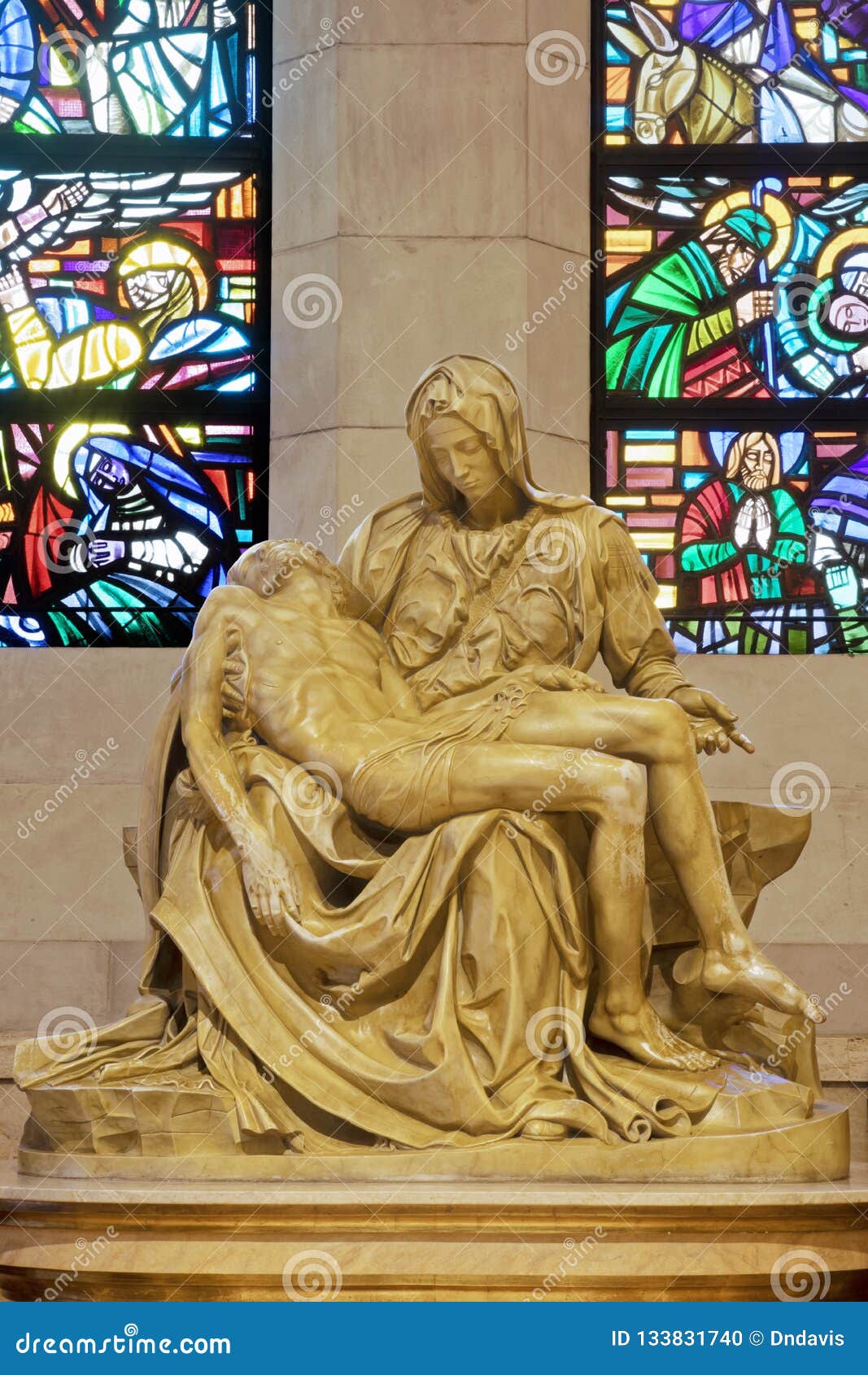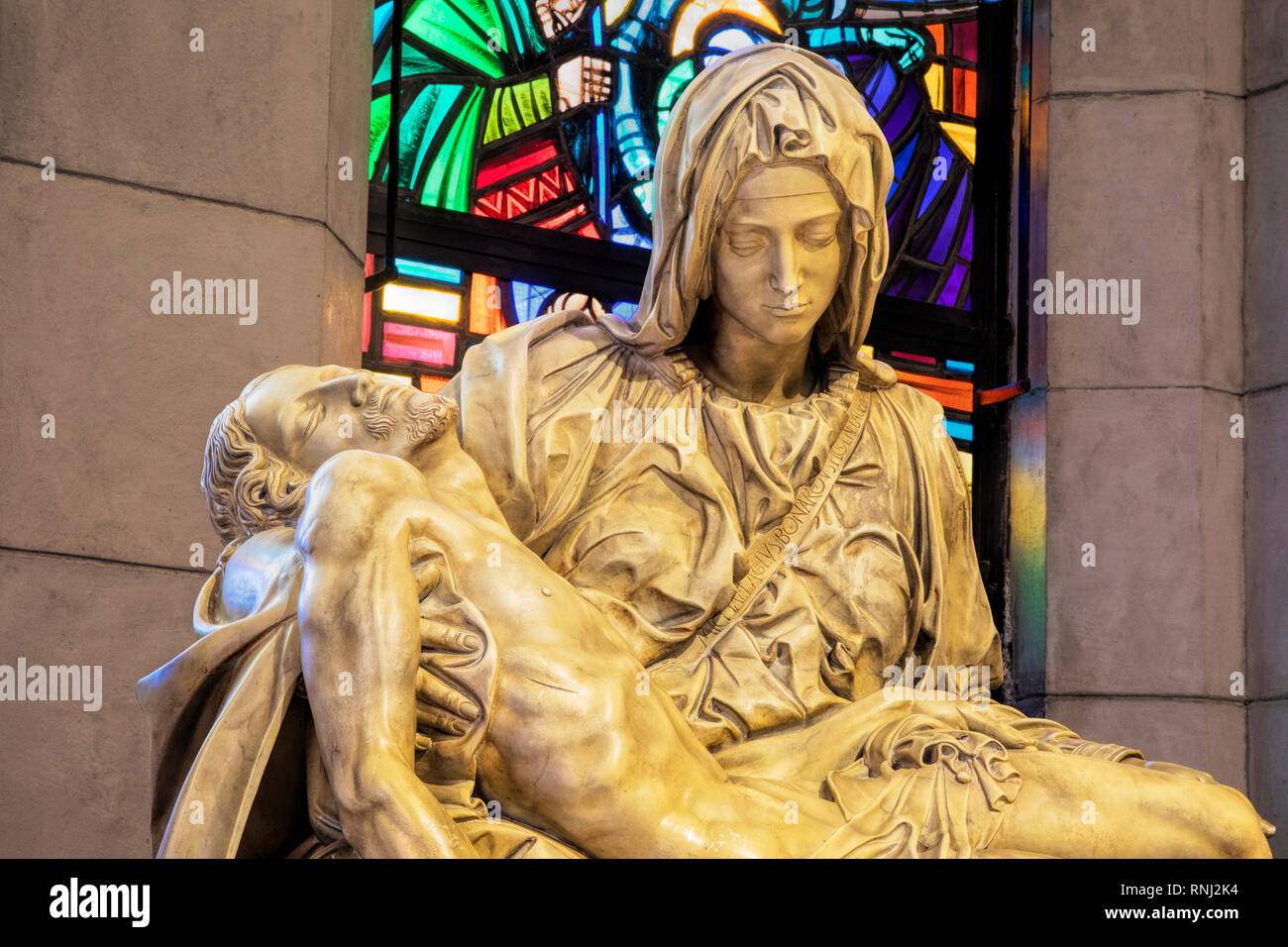Famous Sculpture in the Philippines

One of the most famous sculptures in the Philippines is “The Oblation” by Guillermo Tolentino. The sculpture symbolizes academic freedom and excellence and is located at the University of the Philippines Diliman campus.
Created in 1935, “The Oblation” has become an iconic symbol of the university and a representation of the spirit of selfless service and sacrifice. Standing tall with outstretched arms, the statue conveys a sense of freedom, resilience, and courage. It serves as a reminder of the importance of education and the pursuit of knowledge in shaping the future of the nation.
Visitors often flock to admire this masterpiece and appreciate its profound significance in Philippine culture and history.

Credit: www.alamy.com
Contents
1. The History Of Sculpture In The Philippines
Discover the rich history of sculpture in the Philippines through its famous works of art that beautifully capture the culture, tradition, and beauty of the country. These sculptures showcase the intricate craftsmanship and creativity of Filipino artists, making them a must-see for art enthusiasts.
In the Philippines, sculpture has a rich and diverse history that reflects the country’s cultural heritage and artistic traditions. From ancient times to the present, Filipino sculptors have crafted stunning works of art that captivate and inspire. Let’s take a closer look at the different periods that have shaped the art of sculpture in the Philippines.
1.1 Pre-colonial Sculpture
Before the arrival of the Spanish colonizers, the indigenous people of the Philippines had already mastered the art of sculpture. Skilled craftsmen carved statues and figures using materials such as wood, stone, and ivory. These sculptures often depicted gods, goddesses, ancestors, and mythical creatures, and were used for religious and ceremonial purposes. Each piece was meticulously crafted, showcasing the Filipinos’ exceptional craftsmanship and artistic flair.
1.2 Spanish Colonial Era
The Spanish colonial era, which lasted for more than three centuries, significantly influenced Philippine sculpture. During this period, the introduction of Christianity brought about a shift in subject matter, with sculptures depicting religious figures, saints, and scenes from the Bible becoming prevalent. Spanish sculptors also arrived in the Philippines, bringing with them their techniques and styles. The fusion of local and European influences led to the creation of exquisite sculptures that showcased the talent and adaptability of Filipino artists.
1.3 American Colonial Period
With the arrival of the Americans in the early 20th century, Philippine sculpture underwent another transformation. While American influence brought modern techniques and materials, Filipino sculptors began to explore more contemporary themes and styles. They started incorporating elements of social realism and nationalism into their works, portraying scenes from everyday life and depicting national heroes and struggles for independence. This period marked a significant departure from traditional sculpting practices and paved the way for more experimental and innovative approaches.
1.4 Contemporary Sculpture
In contemporary times, Filipino sculptors continue to push the boundaries of artistic expression. They embrace various materials, including metal, glass, and mixed media, to create thought-provoking and visually stunning sculptures. Themes range from social and political commentary to personal and emotional narratives, reflecting the diversity of Filipino culture and experiences. With the advent of technology, digital sculpting and 3D printing have also become part of the contemporary sculptor’s toolbox, offering new possibilities and avenues for creativity.
2. Notable Filipino Sculptors
Discover the works of famous Filipino sculptors, who have created notable sculptures in the Philippines. Their distinct styles and craftsmanship offer a unique perspective on the art of sculpture in the country.
2.1 Guillermo Tolentino
Guillermo Tolentino is known for his masterpiece, the Bonifacio Monument, which is an iconic symbol in the Philippines. He is often called the “Father of Philippine Arts” due to his significant contributions to the local art scene.
2.2 Napoleon Abueva
Napoleon Abueva, also known as the “Father of Modern Philippine Sculpture”, was the first recipient of the National Artist of the Philippines award for sculpture in 1976. His works are characterized by their innovative and expressive forms.
2.3 Isabelo Tampinco
Isabelo Tampinco was a prominent sculptor during the Spanish colonial period in the Philippines. He was recognized for his intricate and ornate designs, which can be seen in various architectural details and religious sculptures.
2.4 Eduardo Castrillo
Eduardo Castrillo was known for his monumental sculptures, such as the People Power Monument, which commemorates the historic 1986 EDSA Revolution in the Philippines. His bold and dynamic style has left a lasting impact on Filipino contemporary art.
3. Iconic Sculptures In The Philippines
The Philippines is home to a wealth of artistic talent, with stunning sculptures that showcase the country’s rich cultural heritage. Here are some of the most iconic sculptures that have captured the essence of Filipino artistry:
3.1 The Spoliarium By Juan Luna
The Spoliarium, created by Juan Luna, is a masterpiece that depicts the aftermath of gladiators in ancient Rome. It is a symbol of heroism and sacrifice, showcasing Luna’s exceptional skill in capturing raw emotions.
3.2 The Oblation By Guillermo Tolentino
The Oblation, sculpted by Guillermo Tolentino, is a symbol of selflessness and patriotism. This iconic figure can be found in various universities across the Philippines, embodying the spirit of academic freedom and social responsibility.
3.3 The Blood Compact Shrine By Napoleon Abueva
The Blood Compact Shrine, designed by Napoleon Abueva, commemorates the historical event between Spanish explorer Miguel Lopez de Legazpi and Datu Sikatuna. This sculpture symbolizes unity and friendship between different cultures.
3.4 The Uplb Centennial Carillon By Eduardo Castrillo
The UPLB Centennial Carillon, a creation of Eduardo Castrillo, is a towering structure that emits melodious tunes across the University of the Philippines Los Baños campus. It represents academic excellence and cultural pride.

Credit: www.tatlerasia.com
4. Sculpture Festivals And Events In The Philippines
4. Sculpture Festivals and Events in the Philippines:
4.1 Huniño Art Festival
The Huniño Art Festival celebrates the vibrant art scene in the Philippines with captivating sculpture exhibits.
4.2 Pahiyas Festival
The Pahiyas Festival showcases intricate sculptures made from colorful rice grains, embodying local traditions.
4.3 Panagbenga Festival
The Panagbenga Festival features stunning flower sculptures that add a touch of nature to the artistic landscape.
4.4 Kadayawan Festival
At the Kadayawan Festival, beautifully crafted sculptures pay homage to the rich cultural heritage of the Philippines.
5. Sculpture As A Reflection Of Filipino Culture
5.1 Depiction Of Philippine Heroes And National Identity
Filipino sculpture serves as a powerful medium for the portrayal of Philippine heroes and the nation’s identity. From monuments honoring national figures to intricate sculptures depicting pivotal moments in history, the art form encapsulates the collective memory of the Filipino people.
5.2 Artistic Expression Of Filipino Values And Traditions
Through sculptures, Filipino values and traditions find artistic expression. The use of indigenous materials and techniques in sculpting reflects the rich cultural heritage of the Philippines. From religious motifs to everyday scenes, sculptures convey the essence of Filipino life and beliefs.
5.3 Sculpture’s Role In Contemporary Filipino Society
In contemporary Filipino society, sculpture continues to play a vital role. Public installations and art exhibitions featuring sculptures serve as platforms for dialogue and reflection on societal issues. Moreover, the emergence of modern sculptors and their innovative works keeps the art form relevant and dynamic.

Credit: en.wikipedia.org
Conclusion
The Philippines boasts a rich artistic heritage showcased in its famous sculptures. From the iconic “Lapu-Lapu” to the awe-inspiring “Blood Compact Monument,” these works of art offer a glimpse into the country’s history and culture. Visitors and art enthusiasts alike are invited to explore and appreciate the beauty of these remarkable sculptures.




